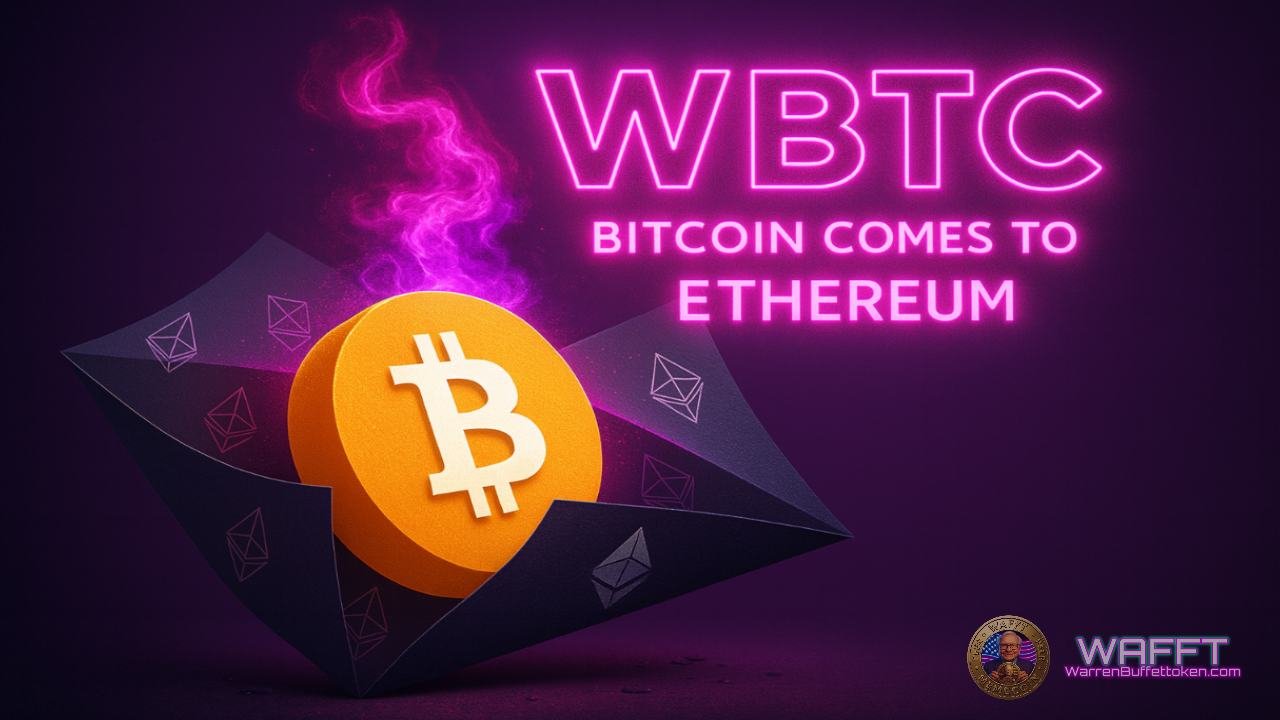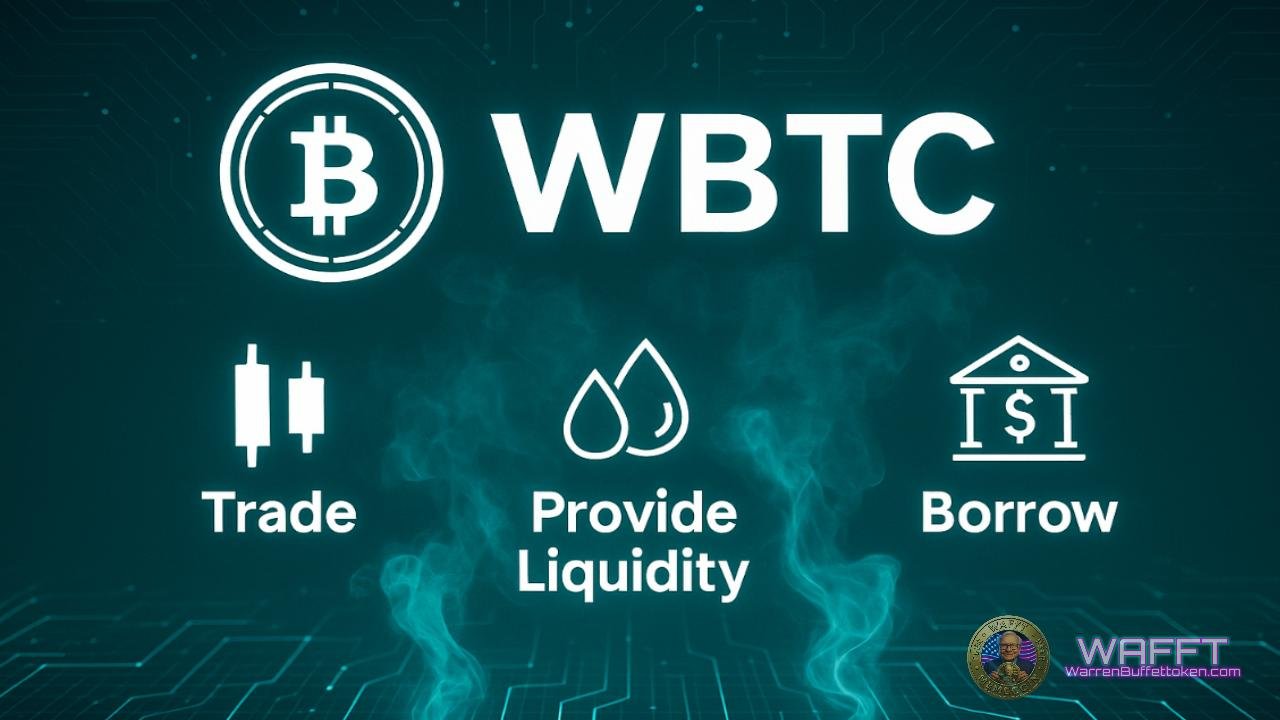WBTC — Bitcoin’s Bridge to Ethereum

🧐 What it is:
WBTC is an ERC–20 backed 1:1 by BTC: Bitcoin is held in custody and the token is minted/burned on Ethereum to keep parity. Governance involves merchants, the custodian (BitGo) and a DAO; you can check supply vs. reserves on–chain. (Decimals: 8 — same as BTC; smallest unit = 0.00000001 WBTC = 1/100,000,000 of a WBTC.)
🔑 Key facts:
🔢 Decimals: 8 (same as Bitcoin)
🧾 Canonical contract (Ethereum):
0x2260FAC5E5542a773Aa44fBCfeDf7C193bc2C599(always verify the full checksummed contract address before interacting).🔗 Refs: Etherscan — WBTC token
🌐 Site & dashboard:
🔗 Official website (WBTC): WBTC
🔗 PoR dashboard (official, WBTC): WBTC dashboard — Audit (Check minted supply vs. BTC reserves, addresses, and on–chain metrics in real time.)
- 🔗 Chainlink Proof of Reserve (WBTC): Chainlink Data Feeds
🛠️ How it works (short):
typically mint through an approved merchant (no self–minting: end users can’t mint WBTC directly; a merchant verifies the BTC deposit and requests minting from the custodian). The merchant receives BTC ₿, coordinates with BitGo to mint WBTC 1:1 on Ethereum, and—on redemption—burns WBTC 🔥 so the BTC is released back 🔓. KYC/AML 🧾 may apply depending on the merchant.
💡 Why it matters & how to use it:
WBTC brings BTC liquidity to Ethereum/EVM: keep your BTC exposure while unlocking practical Ethereum use cases. Here’s what you can do:
Borrow 🏦 (collateral): post WBTC to borrow stablecoins/ETH on lending markets (e.g., Aave). Watch LTV (loan–to–value) and Health Factor; if price drops too far, you risk liquidation.

Provide liquidity 💧 (earn fees): add WBTC to AMM/DEX pools (Uniswap/Curve). You earn trading fees via LP tokens. Mind impermanent loss (LP can underperform holding if prices diverge) and slippage (price impact on swaps).
Trade 🔄 (rebalance/enter/exit): swap WBTC ↔ ETH ↔ stables on deep–liquidity DEXs/CEXs; check slippage and gas during busy hours.
🎯 Instruments:
Advanced traders can use WBTC in derivatives and margin products:
Perps: periodic funding (you pay/receive).
- Options:upfront premium; expiry; non–linear payoffs.
- Futures: expiry and basis (difference vs. spot).
- Collateral & margin: venues may be WBTC–margined or stablecoin–margined; prefer isolated margin, keep leverage modest, and track maintenance margin, funding, fees, and your liquidation price.
👉 Where: Aevo, Hyperliquid, GMX (support & collateral rules vary by chain/venue).

- Derivatives 📈 (hedge or leverage): Use WBTC as collateral to hedge downside or scale BTC exposure on derivatives venues.
Yield strategies 🌾 (auto–compound): Deposit your WBTC or LP tokens into vaults (e.g., Yearn, Beefy) that auto–compound your yield. This compounds returns with no extra effort. Reminder: you’re trusting smart contracts—there’s always some exploit risk.
Payments & treasury 💼: WBTC’s ERC–20 standard (8 decimals — same as Bitcoin) makes it easy to integrate into accounting tools, payment gateways, and DAO treasuries. It behaves like any other Ethereum token—easy to split, send, track, and use in smart contracts—while still representing Bitcoin.
L2s & cross–chain 🌉: Move your WBTC to Layer 2s (e.g., Arbitrum, Optimism, Base, Polygon) or other EVM chains to drastically reduce transaction fees and speed up interactions.
Always verify:
🛡️ Use only the official (canonical) bridge to avoid scams.
🔎 Double–check the token contract address on the destination chain.
🧮 Confirm it uses 8 decimals (not 18) on the destination chain — that’s genuine WBTC.
Most users do this via integrated apps/exchanges like KyberSwap.
⚠️ Watch out for…
Custodial risk 🏦: you rely on a BTC custodian (BitGo). Multi–jurisdiction/multi–institution custody helps, but it’s still not your keys. Mint/redeem can be paused; blacklisting/freezes are possible.
Contract & decimals 🔍🧮: on Ethereum, interact only with canonical WBTC
0x2260…C599(8 decimals). On L2s/other EVMs, verify the bridge’s token address and confirm it uses 8 decimals (avoid look–alike wrappers).
Bridge risk 🌉: use the official (canonical) bridge. Watch for UI spoofing, wrong networks, and withdrawal times; never send WBTC to non–EVM/BTC addresses.
PoR limitations 📊: Proof–of–Reserves dashboards/feeds can lag or go offline. They reduce risk, they don’t eliminate it—check minted vs. reserves before sizing.

Market/peg risk ⚖️: WBTC can trade at a premium/discount vs. BTC in stress—check spread and liquidity depth before large swaps.
DeFi integration risk 🧩: lending (liquidation), AMMs (impermanent loss/slippage), vaults (smart–contract risk) add layered risk.
Operational tip 🧪: for new routes, test with a small amount first before committing size.
📝 Final note:
WBTC delivers best–in–class EVM liquidity and UX, but it is not self–custody—policies and pauses can apply.

☆ WAFFT Checklist for WBTC (Beginner-friendly):
1. Contract? → Always this one: 0x2260FAC5E5542a773Aa44fBCfeDf7C193bc2C599 (8 decimals).
Think of it as the “official address” — don’t use a different one.
2. Bridge? → Use only the official/canonical bridge.
Avoid random links; if you’re not 100% sure it’s the official one, skip it.
3. PoR? (Proof of Reserves) → Check minted vs. reserves on the official dashboard.
You want the numbers to match — that’s what keeps WBTC trustworthy.
4. Liquidity? → Peek at depth and spread before you trade.
More depth + tighter spread = easier, fairer trades.
5. Test? → Start small.
Send a tiny test first; if all’s good, then move the real amount.
👉 Up next: explore tBTC — Trust-Minimized Bitcoin on Ethereum and learn how Bitcoin liquidity flows into DeFi without centralized custody, using threshold cryptography and decentralized operators. ⚙️🧠


